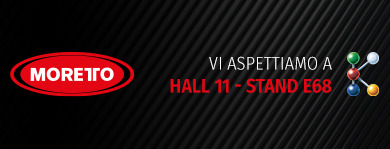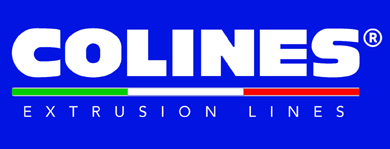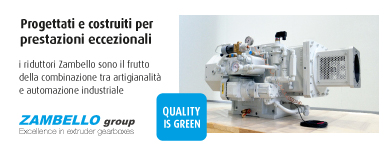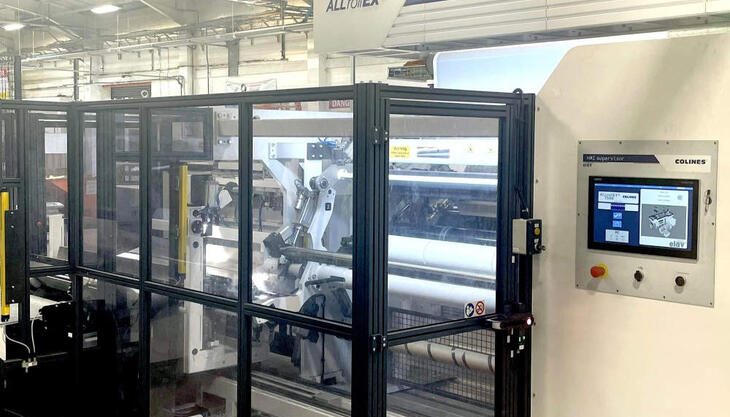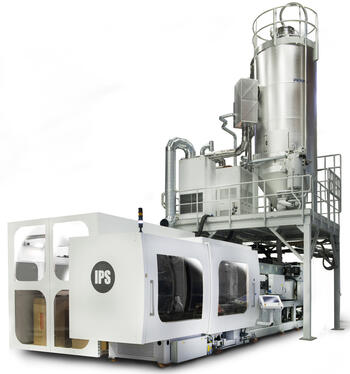
A key milestone for the IPS (Injection Preform System) platform, this manufacturing solution that stands out on account of high reliability, high performance and user-friendliness: the already-successful IPS 220 - which has been on the market for 3 years - will be joined by the new IPS 400, previewed at Imola (near Bologna, Italy) on February 23 before being shipped to major Italian converter Gardaplast. The machine was presented to key operators in the Italian industry and specialised journalists, all of whom were able to see the machine - equipped with a 96-cavity mould to make 11-gram preforms in a cycle time of just 6.2 seconds.
The new injection moulding machine stands out largely on account of the new preform unloading solution: preforms are dropped by the gripper plate directly into the containers, completely eliminating the need for belts and conveyors. Two linear motors move the take out plate with high speed and accuracy, allowing significant energy consumption reduction thanks to the kers (kinetic energy recovery system). Positioning of containers within the cooling area ensures preform unloading is done in a controlled environment, thus reducing the risk of contamination. Equally innovative is the plasticizing unit, where the system that transfers the PET between extruder, shooting pot and mould is managed by a first-in-first-out circuit that prevents the plastic from staying too long in the circuit itself, which could affect the properties of the PET.
However, processors will be pleased to learn that the outstanding ergonomics and ease of use features that were already as-standard on the previous range (e.g. the machine's ability to self-regulate simply by setting the preform size parameters on the user interface) remain unchanged. Like its predecessor, the IPS 400 has been designed to make parts such as valves, motor and circuits easily accessible in order to smooth maintenance tasks and minimise them. Also the new IPS 400 can be fitted with the PVS (preform vision system) quality control unit; the latter can inspect up to 50,000 preforms per hour and detect any deviation from pre-set quality parameters.






